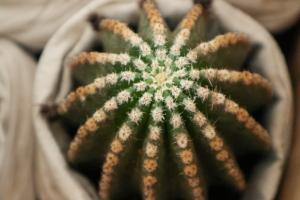Can I Control the Height of Indoor Tomato Plants?
Indoor tomato plants are becoming increasingly popular among gardening enthusiasts as they offer the convenience of being able to grow fresh produce year-round. However, one common concern among indoor gardeners is how to control the height of their tomato plants. In this article, we will explore some methods for achieving this goal.
1. Choosing the Right Variety
One of the easiest ways to control the height of your indoor tomato plants is to choose the right variety. There are many tomato varieties available with different growth habits, and some are better suited for indoor growing than others. Look for determinate varieties, which tend to stay more compact and have a set height. Indeterminate varieties, on the other hand, tend to grow taller and require more support.
2. Pruning and Training
Pruning and training are essential techniques for controlling the height of indoor tomato plants. Begin pruning your plants as soon as they start to develop their first set of true leaves. Remove any suckers that develop in the crotch between the main stem and side branches. This will direct energy towards the main stem, encouraging upward growth.
You can also train your tomato plants to grow upright by tying them to stakes or cages. As your plants grow taller, continue to tie them up to prevent them from flopping over. This will not only help control their height but also promote better air circulation and prevent disease.
3. Lighting and Temperature
Lighting and temperature also play a crucial role in the growth and height of indoor tomato plants. Tomato plants require at least 8-10 hours of direct sunlight or artificial light per day to grow properly. If your plants are not receiving enough light, they may become leggy and stretch out, leading to weak stems and reduced fruit production.
Keep your indoor tomato plants in a warm and consistent environment. Tomato plants thrive in temperatures between 65°F-80°F, so try to maintain a temperature within this range. Avoid exposing your plants to sudden temperature drops, as this can cause them to become stressed and stunt their growth.
4. Watering and Fertilizing
Watering and fertilizing your tomato plants correctly can also help control their height. Overwatering or over-fertilizing your plants can lead to excessive vegetative growth, which can result in tall and floppy plants.
Water your plants deeply but infrequently, allowing the soil to dry out slightly between waterings. Use a balanced fertilizer with equal parts nitrogen, phosphorus, and potassium, and apply it according to the package instructions. Avoid using fertilizers high in nitrogen, as this can promote excessive foliage growth and inhibit fruit development.
Conclusion
Controlling the height of your indoor tomato plants requires a combination of proper variety selection, pruning and training, lighting and temperature control, and appropriate watering and fertilization. By following these guidelines, you can grow healthy and productive tomato plants that are the perfect fit for your indoor garden.

 how many times do yo...
how many times do yo... how many planted tre...
how many planted tre... how many pine trees ...
how many pine trees ... how many pecan trees...
how many pecan trees... how many plants comp...
how many plants comp... how many plants can ...
how many plants can ... how many plants and ...
how many plants and ... how many pepper plan...
how many pepper plan...































